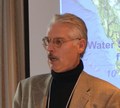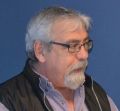3rd IN A SERIES – BLEND SERVICES FROM NATURE WITH ENGINEERED SOLUTIONS: Ecological Accounting – An Idea Whose Time Has Come

The Partnership for Water Sustainability in BC is collaborating with Asset Management BC to integrate “watershed systems thinking” into the Asset Management Continuum. The Partnership is the lead for development of an Ecological Accounting Protocol. Tim Pringle coined the phrase ecological accounting protocol to make clear the distinction vis-à-vis ecological economics. “The purpose of the proposed accounting protocol is to enable comparison of engineered infrastructure to natural systems by means of common units of measurement and value,” states Tim Pringle. “The emphasis is on ‘civil services’ that provide a municipal function.”










